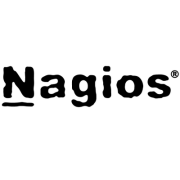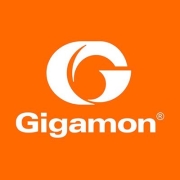Network Traffic Analysis (NTA) offers in-depth visibility into network operations, helping identify patterns, anomalies, and potential security threats. It assists IT professionals in optimizing network performance and enhancing security measures by analyzing data traffic.
Network Traffic Analysis tools are essential in monitoring and analyzing network data to detect performance issues and security threats. They collect and analyze data packets traversing the network to provide insights on bandwidth usage, detect anomalies, and enhance security postures by identifying unusual activities or potential intrusions.
What features are critical in NTA solutions?In industries like finance and healthcare, Network Traffic Analysis tools help maintain strict security protocols and protect sensitive information. Manufacturing and telecommunications sectors utilize NTA solutions to ensure uninterrupted operations and quality service delivery. Retail benefits by safeguarding customer data during online transactions.
Ensuring organizations have a comprehensive view of their network activity, Network Traffic Analysis is helpful for optimizing performance and strengthening security strategies. It supports proactive measures against data breaches and operational inefficiencies by providing actionable insights.




























Noticeably absent from the term “Network Traffic Analysis” is the word “response.” Network-based solutions should be able to not only investigate and detect threats, but also respond rapidly and effectively. There has been a recent shift in terminology to refer to NDR, or “network detection & response,” which uses NTA but then goes one step beyond, with automated threat response and threat-hunting, using intelligent integration with firewalls, NAC, SOAR, or EDR platforms.
Benefits of NTA include:
There are two basic kinds of NTA tools: flow-based tools and DPI (deep packet inspection) tools. Within these, there will be options for historical data storage, software agents, and intrusion detection systems.
Consider the following things when deciding what NTA solution is right for you:
1. Availability of flow-enabled devices. Not all devices are capable of generating the kind of flows required by NTA tools. In contrast, DPI tools accept raw traffic that is vendor independent and found on every network through any managed switch. Network routers and switches don’t require any kinds of special modules or support.
2. The data source: Packet data and flow data come from different sources. Not all NTA tools can collect both. So decide on your priorities before deciding. And then be strategic in choosing what to monitor. Don’t take on too many sources too quickly.
3. Historical data vs. real-time. While historical data can be critical to analyzing past events, not all NTA tools retain this data over time. Have a clear idea of which kind of data is most important to you.
4. Is the software agent-based or agent-free?
5. Full packet capture, complexity, and cost. When looking at DPI tools, consider the cost and expertise required for those that capture and retain all packets versus one that extracts only the critical details and metadata.
NTA plays a crucial role in identifying network anomalies by monitoring and analyzing traffic patterns in real time. When your network deviates from its usual behavior, these tools alert you to potential security threats. They use algorithms to detect unusual patterns, such as spikes in data volume, unusual user activities, or unexpected data leaving the network. By doing this, NTA helps you quickly identify and respond to security incidents, reducing the risk of data breaches.
What are the key benefits of implementing NTA solutions?Implementing an NTA solution offers numerous benefits, including enhanced visibility into network activity, improved threat detection, and faster incident response. These tools provide insight into both north-south and east-west traffic, allowing for a comprehensive view of your network's security posture. With an NTA solution, you can detect intrusions and data exfiltration attempts that traditional security measures might miss. This holistic approach enables you to protect sensitive data effectively and maintain network integrity.
Can NTA solutions integrate with existing security tools?Yes, NTA solutions are designed to integrate seamlessly with other security tools within your IT ecosystem. You can enhance your existing security infrastructure by combining NTA with Security Information and Event Management (SIEM) systems, firewalls, and intrusion detection systems. This integration enables you to correlate network traffic data with other security events, creating a more cohesive and layered defense mechanism.
What are the challenges associated with implementing NTA?Implementing NTA solutions can present challenges, such as managing large volumes of data, ensuring scalability, and avoiding false positives. Handling massive data from network traffic requires efficient storage and processing capabilities. Furthermore, as your network grows, you need a scalable NTA solution that can adapt to increased traffic loads. Tuning and calibrating your NTA tool to minimize false positives is essential to ensure that alerts are accurate and actionable, reducing unnecessary operational overhead.
How do machine learning and AI enhance NTA effectiveness?Machine learning and AI significantly boost NTA effectiveness by automating the identification of complex anomalies and patterns. These advanced technologies can learn from past network behaviors, improving their ability to detect sophisticated threats over time. As machine learning algorithms analyze vast amounts of historical and real-time data, they develop an understanding of what constitutes normal and abnormal behavior, enabling you to identify threats with higher precision and speed.